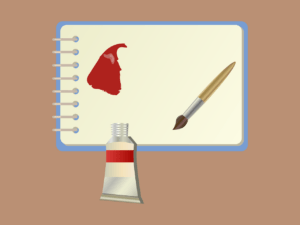What the Web Development Process Actually Looks Like in Practice
An impressive website drives traffic, increases ROI, and stands out to customers.
However, small business owners should not expect to set up a website and immediately see results. The best way to improve a website is to dive into the web development process.
That way, businesses can create a website, understand the process behind it, and then make improvements as needed. Wondering how to get started?
Read on to learn more about the web development process in practice.
Planning and Architectural Design
The web development process begins with planning and architectural design. This is the first and most crucial step in the process.
It involves making decisions about the website’s overall structure and look. This is everything from the navigation and page layout to the content and functionality of the website.
It is essential to ensure that all stakeholders agree on the initial design and layout of the website. It will be the foundation for the rest of the development process.
Once the decision is made, the web development team can create the site’s actual architecture and begin the coding process. Test user interfaces elements and code for functionality and usability.
Go through a final testing round with users or clients. Do this before launching the website, followed by ongoing maintenance.
All of this starts with finding good graphic designers. You need to know where to hire graphic designers to handle the artistic side of the website.
Content and Graphic Design Process
The content and graphic design process usually involve wire-framing a website. In order to determine organization and flow.
Once the wire-framing is complete, graphic design and content are assembled. This is either in-house or by an external agency.
After the content and design are used to build out the first draft of the website, the development team dives into the coding. They work on the website’s back end to set up a content management system.
It also involves APIs integration with any third-party applications the client is using. They also work on the front end to build the website according to the delivered design.
Once the web design is built, they’ll test it on all browsers and devices. They will thoroughly review all the content and designs to ensure it functions as expected and meets the client’s needs.
You may go through additional design or content iteration to ensure it meets the customer’s needs. It’s only then that the website can go live.
Coding and Technical Setup
The web development process starts with coding and technical setup. This involves setting up the server, web hosting, and programming such as HTML, CSS, and Javascript.
Once the basics are in place, the next steps can be taken to maximize the user interface. This includes optimizing the HTML/CSS structure, adding basic visuals, and creating forms and databases.
Finally, the website is tested for errors and goes on to the SEO optimization and link-building phases. After revision and launch, the website is monitored to ensure that visitors can reach the website.
This will allow you to make the required changes if necessary. The coding and technical setup process is a multi-step one that requires constant oversight and attention to make sure the website works properly and efficiently.
Testing and Quality Assurance
During these iterations, testing and quality assurance are vital components.
In order to ensure a successful and user-friendly result. The testing process should include usability testing.
Thu will also include user acceptance testing, cross-browser compatibility, and unit testing. You will do this once the developers have received the necessary feedback.
They will begin to implement changes and fixes to the website. This process is repeated until the product meets the necessary quality standards.
Quality assurance should also include checking page speed. This ensures that content is optimized for optimization, testing interactions, and checking for potential security vulnerabilities.
This process ensures that the website performs to the standards the product manager sets. It also provides a positive experience for all users.
Web Deployment
Web deployment is an integral part of the web development process. It typically occurs at the end of the development cycle.
It involves moving all web assets from the web development environment to the production server. This involves backing up all of the web assets.
Transferring them to the new server, configuring the server, and setting up caching mechanisms. Ensuring the web assets are optimized for the production environment.
Testing is needed to ensure everything works as intended, using tools like Selenium. After this, the web application must be made live using a distributed version control system.
This allows multiple developers to work on a project simultaneously. You may conduct the release, analytics, performance, and scalability reviews after.
Monitoring and Maintaining
The best web developer must create a comprehensive maintenance plan and check on it regularly. This would include ensuring all security patches and version updates.
This will also ensure performance enhancements are running according to the plan. The developer would need to make sure any content updates are made to keep the website up-to-date and relevant.
Finally, the developer would need to monitor the website’s performance and analytics to identify areas of improvement. And tracking customer feedback, if any.
Monitoring and maintaining a website can be a laborious process. But proper planning can ensure the website runs efficiently and provide a good user experience.
Learning Web Development Process
Developers must use the web development process with each new project to ensure success. There are many different frameworks and standards, but each project is unique and requires specific strategies.
Following the development process, developers can create reliable and successful web applications for their clients. Get started today and explore the best development approach for your project!
Browse our other blog posts to learn more today!





